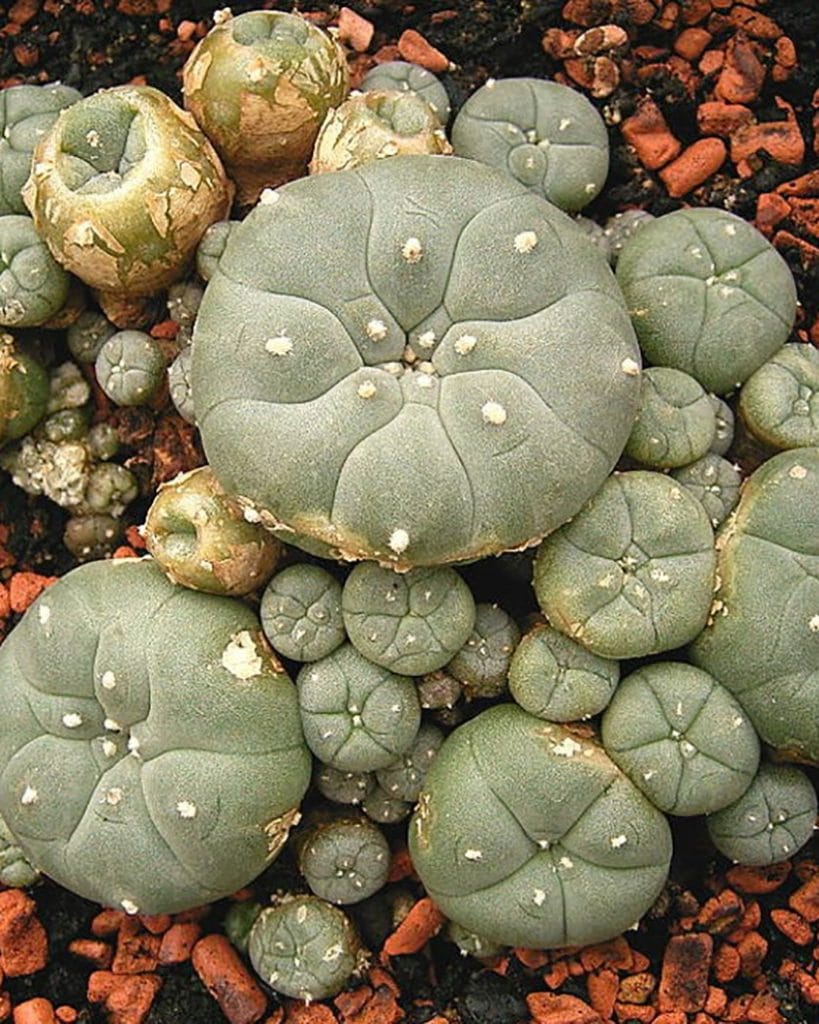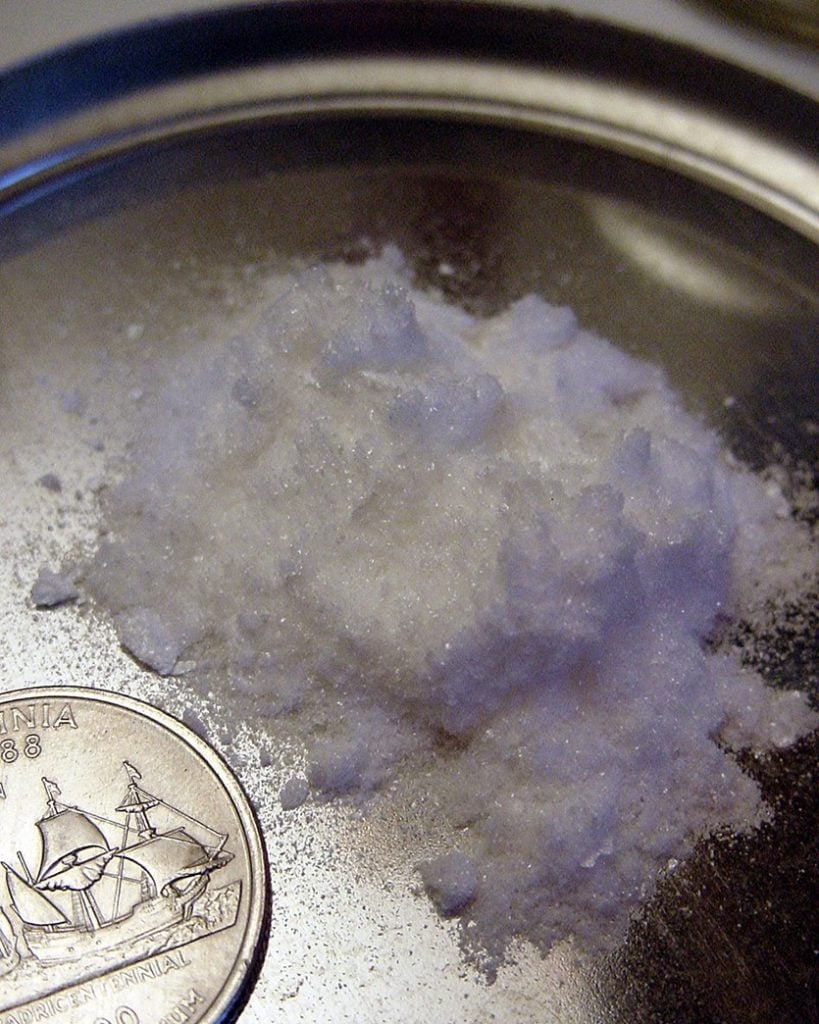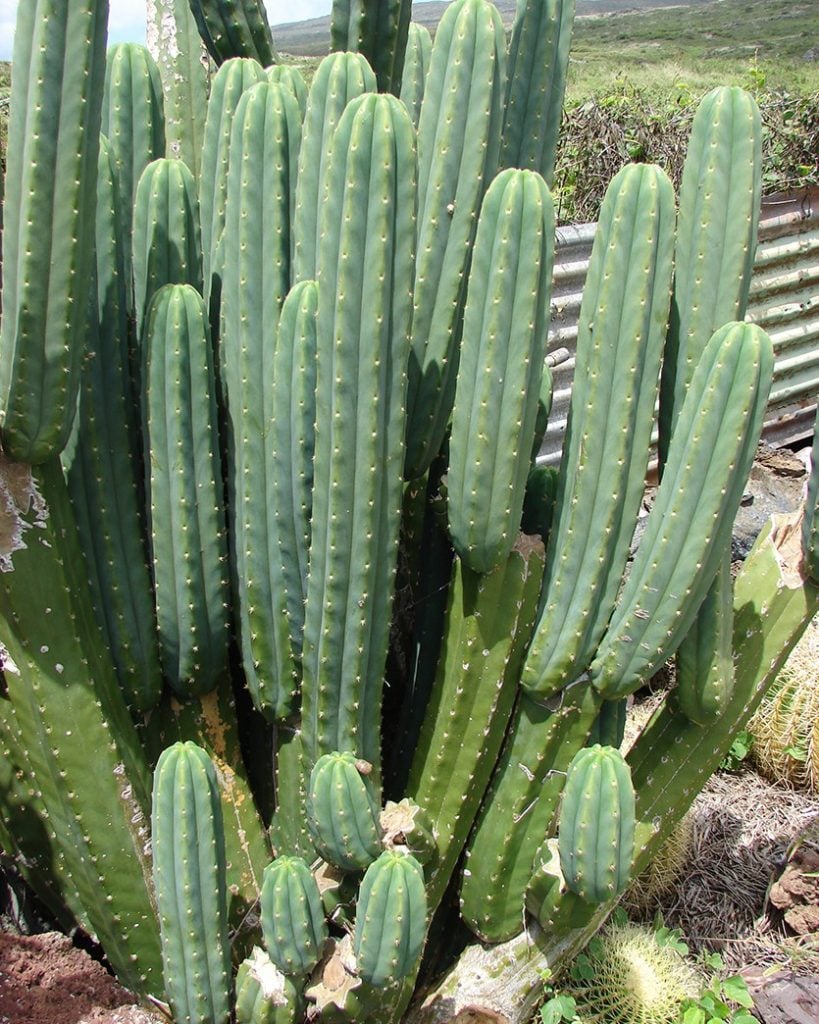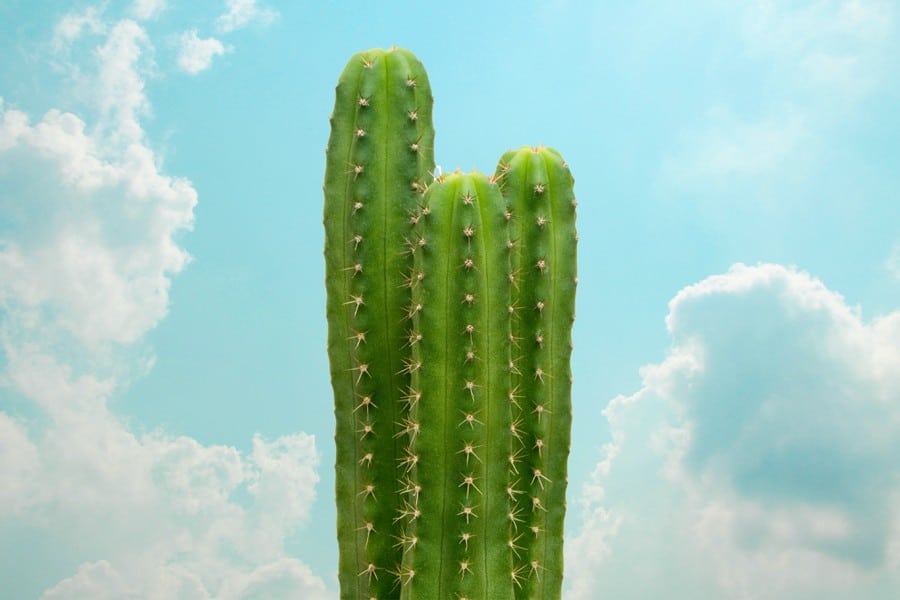Mescaline is a psychedelic that provides an experience not altogether unlike LSD or shrooms: extravagant visuals, an increased sense of connection, appreciation toward even small and mundane details, and novel interpretations of the world around you. Its duration, however, can be several hours longer. If you’re unfamiliar with mescaline, perhaps you’ve heard of peyote, the cactus from which it may be derived.
Like other psychedelics, the experience of mescaline is highly personal and depends heavily on your set and setting. One of the most popular descriptions of a mescaline trip is found in the pages of Aldous Huxley’s 1954 book The Doors of Perception. In this 63-page trip report, Huxley poetically describes his experience and the revelations that poured forth:
“The man who comes back through the Door in the Wall will never be quite the same as the man who went out. He will be wiser but less sure, happier but less self-satisfied, humbler in acknowledging his ignorance yet better equipped to understand the relationship of words to things, of systematic reasoning to the unfathomable mystery which it tries, forever vainly, to comprehend.”
The mystical experiences imparted by mescaline pre-date Huxley by millenia; evidence of mescaline use, in its various forms, dates as far back as 5,700 years. Indigenous populations have long held mescaline as a sacred medicine in spiritual ritual and healing ceremonies. In the 19th century, when northern and eastern tribes were forcibly pushed out of their lands in America by European colonialists, the use of peyote became more widespread as these tribes came into contact with those in the Southwest—one of the few places in the U.S. where peyote grows. Mescaline is still used in indigenous ceremony, though there is concern surrounding the sustainability of the peyote cactus due to its slow growth cycle and declining abundance.
What is Mescaline?
Mescaline is a psychedelic alkaloid that occurs naturally in peyote, San Pedro cactus, the Peruvian torch, and other cactus varieties; these are the natural containers of mescaline that have been used in indigenous spiritual practice for thousands of years.
Mescaline was first synthesized in the lab in 1919 by Austrian chemist Ernst Späth while investigating plant extracts, and although it was initially embraced by scientists, psychologists, and creatives, mescaline’s popularity would naturally be replaced over time by a more efficient and economical alternative: LSD.
How to Grow Shrooms Bundle
Take Both of Our Courses and Save $90!
Also lending to its obscurity, chemist Alexander Shulgin used mescaline as a jumping-off point to synthesize more popular compounds like MDMA, which offered pleasurable effects with a more manageable duration. (It’s worth noting, however, that MDMA was originally discovered by German pharmaceutical company Merck in 1912). As Mike Jay, author of Mescaline: A Global History of the First Psychedelic, writes, “Mescaline itself may have disappeared, but its stepchildren have become the beating heart of twenty-first century drug culture.”
Though it’s a rare find on today’s psychedelic market, white crystalline mescaline is typically mixed into water for consumption or prepared into capsules.
Are Mescaline and Peyote the Same Thing?
Peyote refers to the specific cactus from which mescaline can be derived. Mescaline is the alkaloid found within the cactus’ tissue that is responsible for the psychedelic experience. So, peyote contains mescaline, but it isn’t the only source from which mescaline can be derived.
How is Mescaline Made?
Mescaline can be synthesized in a lab using a number of different starting materials. However, traditional preparations involve harvesting and processing mescaline-containing cacti such as peyote, San Pedro, and Peruvian torch. The cactus top (called a “button”) is cut from the root, dried, and consumed either by chewing, soaking it in water, or grinding it into a powder.
What Does Mescaline Feel Like?
Mescaline is commonly compared to LSD and psilocybin mushrooms. However, the effects are typically longer-lasting and have some unique characteristics that set it apart from other psychedelics.
Be prepared for an extended trip. The effects of mescaline can last up to eight to 12 hours, so consider dedicating your day to the experience. Make sure you have everything you need to have a safe, comfortable journey.
One notable but difficult-to-describe aspect of the mescaline experience common in trip reports is the altered interpretation of the world around you. An excerpt from Alexander and Ann Shulgin’s PiHKAL: A Chemical Love Story helps illustrate this: “Everything seemed to have a humorous interpretation. People’s faces are in caricature, small cars seem to be chasing big cars, and all cars coming towards me seem to have faces. This one is a duchess moving in regal pomp, that one is a wizened old man running away from someone.”
Read: 5-MeO-DMT: The Story Behind the “God Molecule”
Another common theme in post-mescaline storytelling is a sense of connection and empathy with the world around you. Again, from the Shulgins’ book PiHKAL: “A remarkable effect of this drug is the extreme empathy felt for all small things; a stone, a flower, an insect.”
The cultural setting and intention play an important role in the mescaline experience. Casual psychedelic experiences are generally approached for enjoyment, curiosity, and recreation. In sacred ceremony, however, the mescaline experience may be altogether different. John Horgan, an author for The Scientific American, describes how he was warned that his participation in a traditional Native American peyote ceremony would be “in no way recreational or fun.” It was instead focused on the healing of two members of the tribe, a process that Horgan described as “solemn, even anguished” as the evening progressed.
Effects of Mescaline

Just as with any psychedelic, each individual experience is highly unique and shaped by our environment, culture, and mindset. Any given mescaline trip report could be its own original novel, but there are themes and commonalities that may give you a general sense of what to expect:
- Strong visual effects: At high enough doses, mescaline may change your perception of light, color, and texture. Some perceive fractal patterns or other “morphing” visuals overlaid on objects in the environment. Closed-eye visuals may also occur.
- An altered sense of time: Many report feeling an expanded sense of time, or that it seems to progress more slowly.
- Different thinking processes: A signature effect of psychedelics is their ability to change our typical ways of thinking, making them popular tools of creativity.
- Self-awareness and feelings of connection: Many who use mescaline report feeling more connected (sometimes emotionally, sometimes literally) with their environment. As with many other psychedelics, you may come to see yourself relating to the world in new ways or experience an opening of emotions.
- Prepare for potential nausea: Some people report nausea or vomiting during their mescaline experience.
- Possible anxiety and paranoia: Powerful shifts in your consciousness are sometimes jarring. Be prepared for challenging emotions to arise, including anxiety and paranoia, and know what support and comforts are available to you should these challenging emotions arise.
Given the complexity of the mescaline experience, it’s impossible to describe each potential effect you may experience. Consider reading up on trip reports to better understand the range of potential effects, and keep your mind open to the reality that everyone’s experience is unique.
What Are the Risks of Mescaline?

Mescaline, like so many other psychedelics, is difficult to study due to its prohibited legal status in the United States. For this reason, we cannot fully understand the potential risks, especially those relating to long-term use or heavy use. As a general rule, individuals with mental illness, such as or especially schizophrenia, should avoid taking psychedelics or do so with extra precaution; there may also be health risks associated with medication interactions.
Although more studies are needed to understand the long-term effects of mescaline use, one study published in 2005 found no evidence to suggest that regular ceremonial use of peyote led to psychological or cognitive deficits in Native American participants. “It should be recognized, however, that these findings may not generalize to illicit hallucinogen users,” the authors add, emphasizing the importance of not only the biological mechanisms of psychedelics, but also the manner and setting in which they are used.
Read: Psychedelic Set and Setting: What Is It and Why Is It Important?
In addition to potential physical side effects such as nausea, vomiting, rapid heart rate, and impaired coordination and spatial awareness, mescaline can induce powerfully altered states of mind that can be emotionally and psychologically challenging. You may, for example, experience intense fear, emotional overwhelm, or disorientation. If your experience becomes frightening, consider what support is available to you: a trusted loved one who can sit with you, calming music, breathing exercises, or comforts around home that ground you.
Scientific literature has also noted the potential risk of Hallucinogen Persisting Perception Disorder (HPPD) with mescaline. This disorder is characterized by visual “flashbacks”—such as trailing lights, floaters, and glowing lights—that persist after the acute effects of the drug have worn off.
Studied Medical Benefits of Mescaline

Mescaline’s long-standing role as indigenous sacrament reflects its healing value to these communities. Research has a narrow window through which it may study the impacts of sacred, spiritual tradition. However, the studies and shared observations that do exist demonstrate that these practices are meant to “foster health, balance, respect, and a sense of community.”
This is a sacred medicine to the tribal communities, who have long fought to protect it, and indigenous sovereignty and conservation strategies must be at the heart of all discussions concerning mescaline use—especially in light of the diminishing abundance of the peyote cactus.
How to Grow Shrooms Bundle
Take Both of Our Courses and Save $90!
Some researchers have looked at the benefits of mescaline through the lens of the scientific method, especially as interest in psychedelics as psychiatric medications piqued in the 1950s. After its synthesis in 1919, researchers would spend the next four decades documenting mescaline’s effects, especially in early studies in schizophrenia.
However, any scientific fascination with mescaline quickly diminished with the development of LSD. “LSD was massively more potent,” Jay writes in his article. “This made LSD more intriguing to the mind scientists, since it was obviously working with far greater precision on whatever brain mechanisms these drugs were activating.” Although mescaline research did continue after the advent of LSD in 1938, the skyrocketing interest in LSD among both scientific and public spheres combined with tightening drug laws led mescaline research to fizzle out after the 1960s.
There is some interest in mescaline’s potential for treating alcoholism and addiction within indigenous communities, based on research and observations of increased rates of sobriety among Native American Church members who use peyote. However, there are no clinical studies on peyote and addiction to date.
Mescaline Dosage
The standard dose of mescaline for a psychedelic experience is 200-300mg, but be aware that the same dose can affect two people very differently. For this reason, some people prefer to test the waters with a lighter dose (100mg).
Also note that dosing mescaline requires some consideration of its form due to differences in molecular weight (for example, 200mg of mescaline sulfate is comparable in effect to about 178mg of mescaline hydrochloride).
The effects of mescaline may take a while to kick in—often between 45-60 minutes—and may be felt for up to eight to 12 hours.
Like LSD and psilocybin, mescaline appears to be a physiologically safe substance with no recorded overdose deaths linked to pure mescaline specifically. However, there has been at least one recorded death by injury where the individual’s toxicology report detected mescaline. In another case, a man died after being unwittingly injected with a mescaline-derivative (note: not the same thing as mescaline) called DMA in a military intelligence experiment.
Is Mescaline Legal?
The legality of mescaline varies depending on a few different factors, including where you live and the form of the mescaline; for example, in some countries like Canada, there is a legal distinction between mescaline and peyote.
In the U.S., mescaline is illegal (a Schedule I substance since 1970), however, certain religious groups such as the Native American Church have been granted greater protections and liberties under the American Indian Religious Freedom Act. Efforts to decriminalize “natural psychedelics” such as mescaline are underway in cities across the U.S., with successes in Oakland and Santa Cruz so far.
As policy reform spreads, it is vitally important to recognize the history of mescaline, from its sacred origins in indigenous practice to its suppression and cultural persecution. The future of mescaline and peyote—including how it is studied, cultivated, preserved, and shared—must be led by communities that have long lived with the guidance of this plant.
Interested in having a psychedelic experience, but don't know where to start? Get our definitive guide on trusted legal retreat centers, clinical trials, therapists, and more.
We started DoubleBlind two years ago at a time when even the largest magazines and media companies were cutting staff and going out of business. At the time we made a commitment: we will never have a paywall, we will never rely on advertisers we don’t believe in to fund our reporting, and we will always be accessible via email and social media to support people for free on their journeys with plant medicines.
To help us do this, if you feel called and can afford it, we ask you to consider becoming a monthly member and supporting our work. In exchange, you'll receive a subscription to our print magazine, monthly calls with leading psychedelic experts, access to our psychedelic community, and much more.



